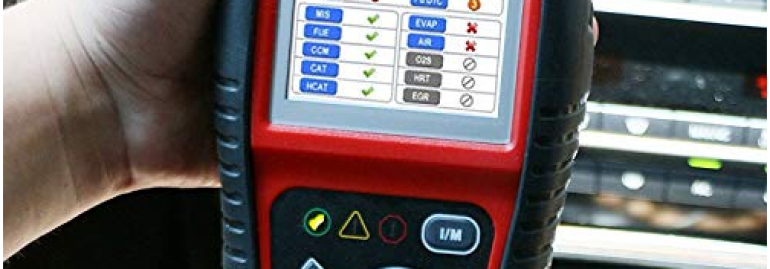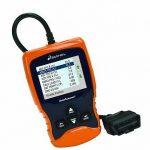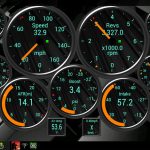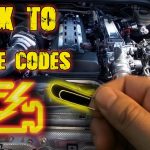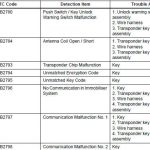
If you want to learn how to read car diagnostic codes, you’ve come to the right place. In this article, we’ll discuss OBD2 and trouble codes, their meaning, and how to read them. Once you’ve mastered the basics, you can take your knowledge of car codes one step further. By the end of this article, you’ll have a much clearer picture of what’s wrong with your car.
OBD2
When you’re wondering how to read OBD2 car diagnostic codes, you’ve come to the right place. You can use the internet to find helpful tips on identifying trouble codes in your vehicle, or you can even purchase a scanning tool and scan yourself. OBD2 scan tools are typically located under the dashboard, beneath the steering wheel column, in areas 4 to nine. In addition to the codes, you can also check your car’s condition with these scanners.
The codes you see on your dashboard are a warning from your car’s computer, and you need to take action immediately. Fortunately, you can fix most problems by yourself. To learn more about OBD2 car diagnostic codes, visit nonda Auto DIY Center. These videos show you exactly what to do if you have trouble reading one of these codes, and are designed to help you diagnose your vehicle yourself.
Once you’ve purchased a scanner, plug it into the car’s OBD port, usually located under the dash near the steering wheel. Some vehicles have the port located in the center console or under the knee bolster panel. Locating the OBD port is usually easy, but some models require you to remove the knee bolster panel. Your car’s owners manual should help you find the port. Once you’ve connected the OBD scanner to the car’s computer, you can read the codes on your car.
The first digit of the code indicates the type of problem. There are generic codes and manufacturer-specific codes. Codes that start with 0 are common, and they are assigned to most vehicles. If the first digit is “1” or “P,” the problem is with the engine or powertrain. Manufacturer-specific codes are found by identifying the first two digits of the code, while those starting with P1 or P2 are specific to a specific car model.
OBD2 trouble codes are an essential part of your car’s self-diagnostic system, and they identify any malfunction in your vehicle. You can learn how to read these codes by using the steps described above. You can also try the methods above if you have any trouble finding the problem. You can even get the code of a faulty oxygen sensor if you suspect it is related to a faulty fuel injection or airbag.
Trouble codes
Before you can understand how to read car diagnostic codes, you should be familiar with the basics. EVAP codes, for example, are used to diagnose problems with a vehicle’s emissions system, which helps to keep air pollution to a minimum. Transmission codes, on the other hand, monitor a vehicle’s transmission, and are typically triggered by problems with the vehicle’s speed sensor or computer output circuit. The correct tools are needed to read car diagnostic codes, as well as the proper equipment.
Trouble codes are codes that indicate various problems. They are either temporary or permanent, and have different meanings. There are also generic and manufacturer-specific codes. These codes are assigned a number, so knowing the code of your vehicle is crucial for identifying the problem. Once you know what trouble code to look for, you can read it and diagnose the problem. You can use the trouble code to help you with repairs or to troubleshoot other issues with your car.
When you know the code, you can use it to determine the problem. The code itself is made up of numbers and letters that indicate the general problem with your vehicle. The first two digits in the code are generic, while the last three are manufacturer-specific. If you are unsure of what the error code means, you can try searching online. Once you have your car’s code, you should use a program called OBD Auto Doctor. This software includes fault descriptions for over 18 000 diagnostic trouble codes. It can help you clear the check engine light and diagnose problems with your car’s performance.
Trouble codes can be stored in nonvolatile memory. Therefore, the car’s engine computer can retain them even if the battery is disconnected. While it may be tempting to try to clear the codes manually, this isn’t recommended, as it could erase all the engine’s learned memory and electronic presets. Always take a note of the codes that you’ve learned to read on your car. So, if you want to avoid replacing good parts, learn how to read car diagnostic codes.
Meaning of each code
You may have heard of the different car diagnostic codes. They can indicate a number of different issues – powertrain, emissions, body systems, and so on. To help you determine which codes are causing your car’s malfunction, we’ll discuss the differences between each. The categories are: powertrain (P-codes), body systems (C-codes), and network & vehicle integration (U-codes). Each code indicates a different part of your car. To determine which code means your vehicle, it’s best to consult your manual or an online source.
In general, trouble codes have a digit, and each one means a specific problem. The first digit of each code is generic, or used for all cars that follow the OBD2 standard. These codes are used to describe common problems, but some manufacturers have added their own codes, known as manufacturer-specific codes. Some examples of generic codes include P0 and P2, while some are manufacturer-specific, and some mean nothing at all.
In addition to P0xxx codes, there are also manufacturer-specific and enhanced codes. Manufacturer-specific codes have a higher level of diagnostic information and are considered necessary by manufacturers. These codes can indicate problems with the engine’s powertrain, fuel or air metering, and ignition systems. Codes beginning with P0 and P1 are generic codes, while codes beginning with “1” are manufacturer-specific. The second digit, other than the “0,” indicates the vehicle’s auxiliary emissions control or mass air flow sensor.
Another diagnostic code, P0033, indicates a powertrain problem. A faulty O2 sensor will cause increased emissions. Another common vehicle problem is a faulty powertrain control module. A P0106 code can mean a number of different problems, ranging from a warning light to a complete engine failure. To get a better understanding of each car diagnostic code, try using a car diagnostic tool. There are many free and convenient diagnostic tools that make the process easier.
OBD II codes are also the most common. OBD-II codes are manufacturer-specific, while P0xxx codes are universal. OBD-II codes start with a letter, which denotes a problem. These codes are usually only one-line descriptions and can be confusing. In most cases, a technician should consult their vehicle’s owner’s manual or dealer before performing any repairs. If a vehicle diagnostic tool isn’t available, you can use a scan tool.
Methods of reading trouble codes
Before you attempt to read your car’s trouble codes, you should know what they mean. Usually, car diagnostic codes begin with the letter “P,” meaning powertrain. Other codes may begin with “C,” which means body system or chassis problem, or “U,” which indicates computer or communications problem. To find the most appropriate code, you should consult the owner’s manual. However, it is not necessary to understand every code to know which system it represents.
The first step in reading the trouble codes is to locate the test lead. Typically, this will be under the dashboard on the driver’s side. Connect the wire or paper clip to the connector and wait for the car to display the trouble code. If you do not see a code, the next step is to use a diagnostic scan tool to find the problem. Some methods may not work on all models, however. For instance, you should not attempt to read the code if you have not purchased a special diagnostic tool. Alternatively, you can try to look up the code on the dashboard by simply holding down the odometer reset button.
Another option is to look for a manual online. These manuals often include technical service bulletins and walk you through the diagnostic process. They may also contain component locators and wiring diagrams, allowing you to pinpoint the exact fault code. In addition to an OBD scanner, you’ll need a computer with Internet access. Using a manual can be a convenient way to learn how to read a code.
Some of the most common trouble codes are P0030, “C0030”, and “F0434” respectively. These three codes indicate a specific problem in your car. In other words, a P0030 code, for example, indicates a problem in the powertrain, while an “8” code indicates a malfunction in the ignition system. These codes are not always easy to interpret, so you must be familiar with the codes before you attempt to repair the problem yourself.


